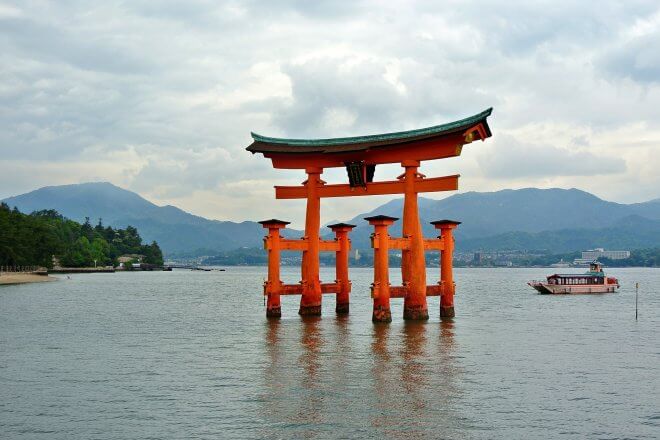Alternative Travel Index Rank: #2
Japan is also the 1st Most Underrated & the 2nd Cultural Destination
Excels in health & hygiene, transport efficiency, intangible cultural heritage
Population and tourists density at peak season: 339 (very high)
The “Land of the Rising Sun” is a country where past meets future. Japanese culture stretches back millennia, yet has also been quick to adopt and create the latest modern fashions and trends. It may well seem full of contradictions.
Japan has often been seen in the West as a land combining tradition and modernity, and many traditional structures and practices are preserved, but modern structures and practices definitely dominate your experience in Japan.
Japan was the first Asian country to independently modernize, and the country continues to embrace new technologies and aesthetics, but unlike in many countries, Japan does not feel a particular need to attack or remove older technologies, structures, or practices.
Travel Costs
Japan ranks #119/141 for price competitiveness in Justraveling’s Alternative Travel Index. Average travel costs per day: $46 (backpacker) – $253 (mid-range). Cheapest Japanese cities: Kyoto, Kobe. Most expensive cities: Osaka, Tokyo.
Best Time to Go
Apr-May and Sep-Dec are the best time to go to Japan. Besides the famous cherry blossom, nature gives its best during spring and fall. Jun-Jul is rainy season in most of Japan. Winter is fine to go skiing or hot-spring hopping.
Places to Visit
With over 13 million people in the official metropolitan area alone, Tokyo is the core of the most populated urban area in the world. This huge, wealthy and fascinating metropolis brings high-tech visions of the future side by side with glimpses of old Japan, and has something for everyone.
Kanazawa is one of the best-preserved major Edo-period city in the country. The samurai, the merchants, the geisha, and the lords have all left their mark on the city in a compact, easily navigable central area. Kanazawa cuisine is famous throughout Japan, particularly its seafood.
Miyajima is one of the crown jewels of Japan, and certainly one of its finest views. Located off the coast of Hiroshima, the serene beauty of the island is an essential coda to that city. Miyajima, which literally means “Shrine Island”, has been considered a holy place for most of Japanese history.
Known for the craftsmanship of traditional hand-made paper (aka Washi), Hamada is a coastal city on the Sea of Japan and possesses beautiful white sand beaches, which make it a popular destination for local tourists in the summer.
Dewa Sanzan is in the northern Tohoku region of the main Japanese island Honshu. It comprises three sacred mountains, clustered together in the ancient province of Dewa, and is a popular pilgrimage and hiking site.
Shiretoko National Park is one of the most remote areas of Japan. It has no sizable settlements, and the northern portion of the peninsula does not even have any roads. Peak visiting season is during the short summer period.
Travel Ideas and Things to Do
The Nakasendo Way, is a 530 km route which linked Kyoto to Tokyo during Japan’s feudal period. Once crowded with samurai, merchants and pilgrims, now is much less busy and offers a pleasant path through Japan’s fascinating history.
Located in a national park, Kamikōchi is the gateway to the Japanese Alps (Hida Mountains) and from mid-April, when the Kama Tunnel opens to public transport, it becomes a perfect setting for hiking expeditions of varying length.
The Shinetsu Trail climbs over the Sekita mountain range, between Nagano and Niigata Prefectures, connecting various traditional villages along the way. Covered by snow in winter, the trail offers great mountain and ocean views.
The Fuji Five Lakes area seems to be made for cyclists. If you plan a cycling holiday here, your bike tour will necessarily include a visit to the idyllic lakes, while enjoying the best possible views of sacred Mount Fuji.
Visiting Kitahiroshima Town, Hiroshima, in early June, you’ll have a chance to attend a unique agricultural ritual: the Mibu no Hana Taue. Supposed to assure an abundant rice harvest, it is an Intangible Cultural Heritage of Humanity.
More active travel ideas for your next trip can be found in the Hiking Series. Check out these five routes to enjoy an awesome day hike in Japan.
This Travel Guide is a work in progress. Improve it with a Japanese touch!
- Browse All Non-EU Destinations
- World’s Best Alternative Travel Destinations
- Trip Planning: Inspiration, Budget, Flights, Accommodations, Tools
Sources: some text excerpts from Wikitravel & Wikipedia; travel cost data from Numbeo.




